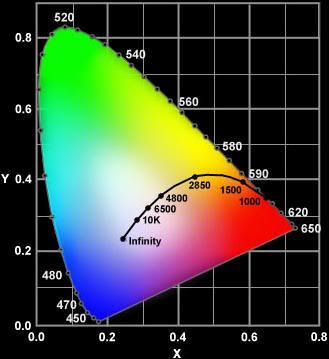That's a big question, and my answer will be rambling, musing, and speculative. The short answer, however, is that blue stars have historically been called white, white stars have been called yellow, and yellow stars have been called red. When truly red stars were discovered, namely the brown dwarfs, astronomers found that they had run out of suitable color designations. The little lithium-fusing runts couldn't be called "red dwarfs" since that name had already been claimed for stars like Proxima Centauri. But since the color brown can be described as a murky shade of red, the designation "brown dwarf" was chosen for these tiny little red embers.Have you any idea about WHY they were first ever called BROWN dwarfs?
A more interesting question, of course, is why the blue (or blue-white) stars (such as Vega) were never recognized as blue, but were called white instead. And why do most people consider it a universal truth that our white Sun is yellow? And why do people insist on calling Betelgeuse red, even though it is obvious that it is really yellow-orange?
Let's start with the Sun. It is clear that the Sun is yellower in color than the blue sky around it, so it is really no wonder that the Sun has been described as yellow. To me, however, it is very interesting that people seem to be more baffled by the blue color of the sky than by the yellow color of the Sun. When I googled "Why is the sky blue?", I got 311 000 hits, but when I googled "Why is the sun yellow?", I got "only" 77 100 hits. People seem willing to accept that the Sun is yellow without asking many questions about it, but the blue color of the sky seems to be a considerably greater mystery. In reality, much of the blue light of the Sun is scattered by the Earth's atmosphere, making the sky look blue. For the same reason, since much of the blue light of the Sun is "scattered away from it" by the atmosphere, our white Sun looks yellow from the Earth.
So our white Sun has been accepted, even by scientists, as a yellow star, and the Sun is officially designated a "yellow dwarf". The Sun is called a "dwarf" because it fuses hydrogen to helium in its core, and it is called yellow because... well, because it has always been regarded as yellow.
What about the blue-white stars, then? The sky is full of them. Consider the Big Dipper, for example, where six out of seven stars can be described as blue-white. Consider Orion, where six of the seven brightest stars are blue-white, and most of the slightly fainter stars are blue-white, too. Consider the conspicuous Summer Triangle, made up of Vega, Deneb and Altair, which can all be described as blue-white stars. And Sirius, the seemingly brightest star of them all (apart from the Sun) sparkles and glitters in many colors like a crystal chandelier, but its dominant color is clearly blue-white. Out of the twenty-five visually brightest stars in the sky (apart from the Sun), fifteen belong to spectral classes A and B and are blue-white. The blue-white diamonds dominate the sky.
Yes, but their bluish color is diluted and almost white, so it is hard to spot. And the fact that these blue stars dominate the heavens means that their color doesn't stand out. But there are five other stars whose colors really make them standouts. These five stars are Betelgeuse, Antares, Aldebaran and Arcturus (and Gamma Crucis, which can't be seen from the northern hemisphere). These stars are so very much yellower than all the blue-white luminaries around them that humanity has "always" found them interesting because of their color. It is no wonder that they have been called red.
Personally I do think it is almost an insult that Vega has been "defined" as the perfectly white star, because Vega is really a strikingly blue star to me! When I belonged to an astronomy club whose members used to do quite a bit of observing, we - that is, I - liked to show our visitors Vega through our biggest telescope, and then I asked them what color they thought it was. Everyone said that Vega was blue.
Vega also has the kind of spectrum that peaks in the ultraviolet, so it is quite clear that it emits more short-wave than long-wave light. Even so, it has been "defined" as the ultimate example of a white star. I find it, as I said, slightly insulting. The only reason I can find for it is that astronomers have traditionally regarded it as "impossible" for stars to be blue, in the same way as people have regarded it as "nearly impossible" and therefore really strange that the Earth's sky is blue. I think, in other words, that astronomers have traditionally approached the concept of stellar colors with the preconceived notion that stars must be either white, yellow or red. And since Vega is the bluest-looking of all the stars in the northern hemisphere (or so I think anyway), its very blueness was the reason why it was "defined" as the whitest of all stars.
So, in short, the designation "red stars" was given to yellow-orange giants like Betelgeuse and Antares and later to yellow-orange dwarfs like Proxima Centauri. When astronomers found some truly red stars, they had to come up with another "color designation" for them.
Ann



